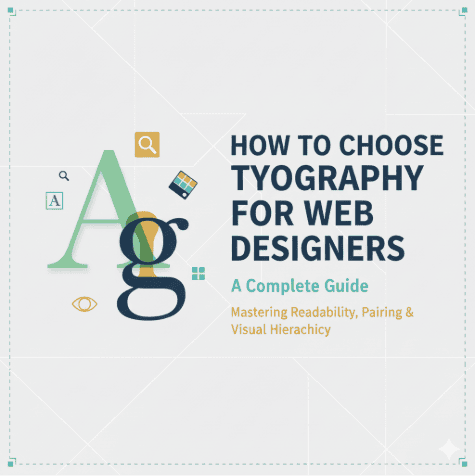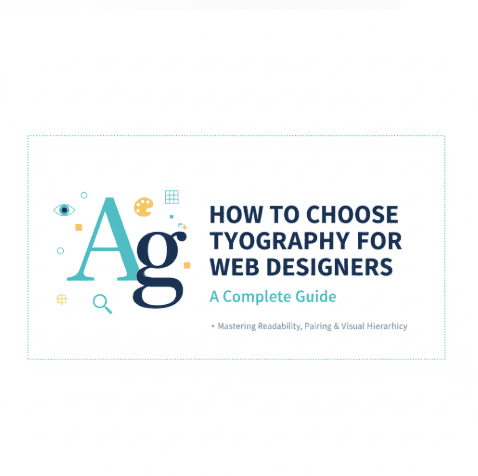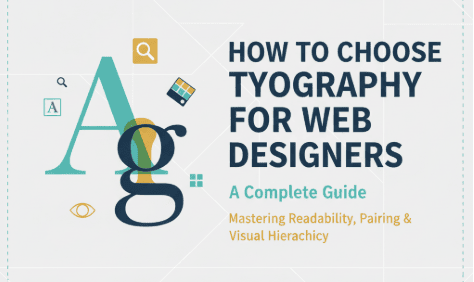Understanding how to choose typography for web designers is essential because typography is not just about choosing pretty fonts—it is the backbone of user experience and branding in web design.
Table of Contents
- Why Typography Matters in Web Design
- Key Principles of Choosing Typography
- Font Pairing Strategies for Designers
- Readability and Accessibility Considerations
- Best Font Styles for Different Website Types
- Recommended Fonts from Edric Studio
- Conclusion
1. Why Typography Matters in Web Design {#why-typography-matters-in-web-design}
Typography is not just about choosing pretty fonts—it is the backbone of user experience and branding in web design. According to Smashing Magazine, typography accounts for 90% of website design because most online content is text.
When typography is chosen correctly, it:
- Improves readability.
- Creates a consistent brand identity.
- Guides user attention and navigation.
2. Key Principles of Choosing Typography {#key-principles-of-choosing-typography}
Web designers must consider several factors when selecting typography:
- Legibility → Fonts should be clear across devices.
- Hierarchy → Use different font weights and sizes to highlight content.
- Consistency → Limit to 2–3 fonts maximum.
- Compatibility → Ensure the fonts load well on all browsers.
A balanced font choice enhances both aesthetics and functionality.

3. Font Pairing Strategies for Designers {#font-pairing-strategies-for-designers}
Pairing fonts is one of the biggest challenges. A good rule of thumb is to mix contrast while keeping harmony:
- Sans-serif + Serif: Clean body text with a classic heading.
- Handwritten + Sans-serif: Adds personality while keeping it readable.
- Display + Neutral Body Font: Bold headings with simple paragraphs.
For example, combining a bold header font like Kelsey Wilson Font Duo with a simple sans serif gives a modern, stylish look.
4. Readability and Accessibility Considerations {#readability-and-accessibility-considerations}
Typography should be inclusive. Following accessibility guidelines ensures everyone can read your content. According to W3C Web Accessibility Initiative, you should:
- Use at least 16px font size for body text.
- Maintain enough contrast between text and background.
- Avoid overly decorative fonts in long paragraphs.
A font like Serameyer Handwriting Font works beautifully for quotes or accents but should not be used in long text blocks.
5. Best Font Styles for Different Website Types {#best-font-styles-for-different-website-types}
Every industry has unique typography needs. Here are some examples:
- Corporate Websites → Serif fonts convey professionalism. Try Ariani Danila Font.
- Creative Portfolios → Brush or handwritten fonts stand out. Example: Downgrade Brush Font.
- E-Commerce Stores → Clean sans-serifs for easy navigation.
- Lifestyle Blogs → Script fonts add personal touch.
By matching font style with industry, you create a cohesive brand experience.
6. Recommended Fonts from Edric Studio {#recommended-fonts-from-edric-studio}
Here are some Edric Studio fonts ideal for web designers:
- Kelsey Wilson Font Duo → Perfect for modern branding.
- Serameyer Handwriting Font → Great for quotes or blog headers.
- Downgrade Brush Font → Stylish for portfolio websites.
- Ariani Danila Serif Font → Elegant serif for professional websites.
- AXTON Sans Serif Font → Ideal for creative projects and digital campaigns.
7. Conclusion {#conclusion}
Learning how to choose typography for web designers is essential for creating visually appealing and user-friendly websites. The right font enhances readability, builds brand identity, and improves accessibility.
When in doubt, test combinations, prioritize readability, and don’t forget that your font choices should reflect the brand’s values. For reliable and stylish options, explore Edric Studio’s font collection.

